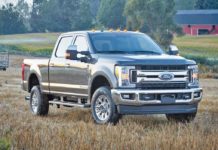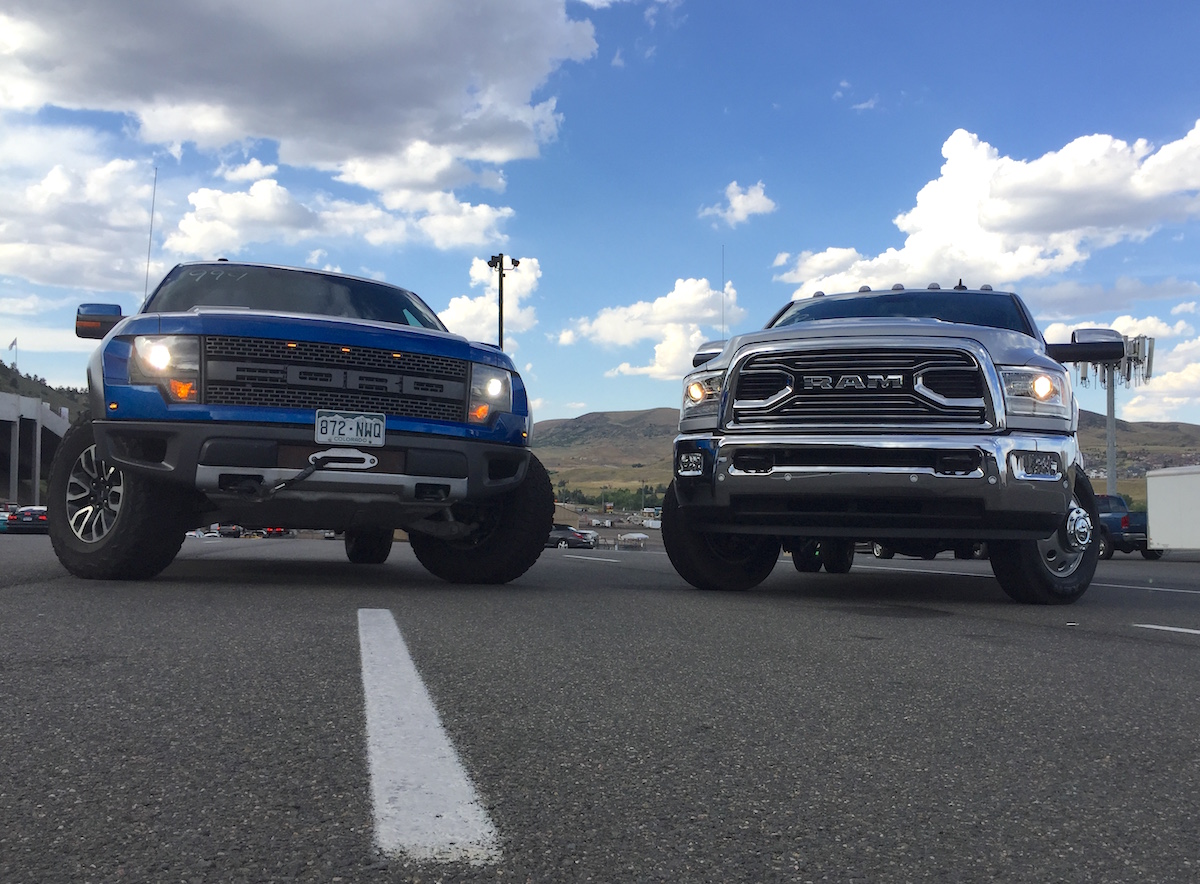
TFLtruck recently received the following question at ask@tfltruck.com from Nick W.
I work for Forestry as a wild-land fire fighter in Florida. We use F-550s and Ram 5500s as our brush trucks. I was wondering why the 5500s are rated lower in HP and torque than the 3500s? They are the same motor and transmission (Cummins or Power Stroke).
Thanks for any input!
This is a great question since the power ratings difference between the consumer grade diesel trucks and commercial grade trucks is significant. Take Ford as an example. The consumer version of the 2017 model-year 6.7L Power Stroke turbo-diesel V8 is rated at 440 horsepower @ 2,800 rpm and 925 lb-ft of torque @ 1,800 rpm. This engine and its massive power output is also available in the 2017 F-450 crew cab pickup. However, if you opt for the commercial grade chassis cab version of the F-450 or the F-550, then the 6.7L Power Stroke rating is 330 horsepower @ 2,600 rpm and 750 lb-ft of torque @ 2,000 rpm. There is a big drop in the power rating. In fact, the specific engine and the upgraded 6-speed automatic transmission in the F-450 / F-550 chassis cabs are the same as in the F-650 / F-750 Medium Duty trucks. The maximum payload rating for the F-550 is 12,730 lbs.
Here is our exclusive towing test of the 2017 F-450 crew cab, towing 30,000 lbs up the Super Ike Gauntlet mountain.
The story is very similar with the Ram 4500 and 5500 trucks. The Ram 3500 HD has a 6.7L Cummins I6 motor that is rated at 385 hp @ 2,800 rpm and 900 lb-ft of torque @ 1,700 rpm. The commercial grade version of the “high output” Cummins in the Ram chassis cabs is rated at 325 hp @ 2,400 rpm and 750 lb-ft of torque @ 1,500 rpm. Ram uses rear axle ratios of either 4.44 or 4.88 depending on transmission. The consumer truck does not go as low, it has a 4.10 rear axle ratio. The Ram 5500 maximum payload rating is 12,480 lbs.
The Latest Class 5 trucks can carry more than 6 tonnes of payload! This is impressive.
There are several reasons for commercial engine to be rated lower on power. Commercial grade Class 4 and Class 5 trucks (chassis cabs) carry much heavier weights and do so on a regular basis or all the time. Your fire truck is likely to be fully outfitted all the time. While the consumer truck may spend most of its life running empty or with light loads. That’s not to say that many of you do not use your half-ton or 2500 trucks for round-the-clock work duty. Durability, longevity, and serviceability are critical for a commercial truck. In the case of fighting wild fires, having a dependable truck can be a matter of life or death. In other cases, a truck that is not running makes no money.
Commercial trucks have different emissions regulations and testing procedures that require unique components and combustion handling. Consumers trucks are “chassis certified” and commercial grade engines are “dyno certified”.
Commercial trucks have other unique requirements of longer idling times, power takeoff accessories, larger alternators, and more.
Each type of engine is specifically designed and tuned for the application that it will be used in. All these aspects combine together for commercial engines that have lower power ratings than their consumer counterparts.
Here is a look at the 2016 Ram 5500 dump truck.
















![Which is More Reliable: 3.5L EcoBoost or 5.0L V8? [Reader Question] Second-generation 3.5-liter EcoBoost engine](https://tfltruck.com/wp-content/uploads/2016/05/Second-generation-35-liter-EcoBoost-engine.jpg)
![Which Silverado Engine to Get: 5.3L or 6.2L V8? [Ask TFLTruck] 2016 chevy silverado](https://tfltruck.com/wp-content/uploads/2015/10/2016-chevy-silverado-grille.jpg)
